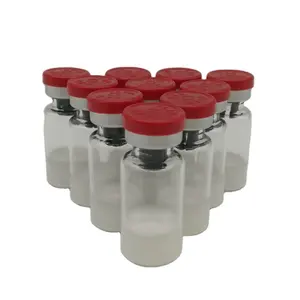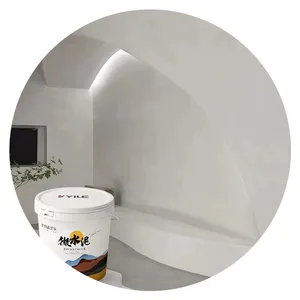ได้รับความนิยมในอุตสาหกรรมของคุณ


Judor เก้าอี้หนังแท้ปรับนอนได้,เก้าอี้เล่นเกมแข่งตามหลักสรีรศาสตร์พร้อมที่วางเท้า
฿1,291.24 - ฿2,029.08
การสั่งซื้อขั้นต่ำ: 200 ชิ้น







เบาะนั่งรถตู้แบบหรูหราสำหรับรถยนต์, เบาะนั่งภายในรถยนต์สำหรับ Toyota Sienna Carnival
฿14,683.15 - ฿22,135.40
การสั่งซื้อขั้นต่ำ: 1 ชุด







Judor เก้าอี้เล่นเกม,เก้าอี้เล่นเกมแข่งคอมพิวเตอร์เล่นเกมแบบหมุนได้
฿2,139.76 - ฿2,324.22
การสั่งซื้อขั้นต่ำ: 1 ชิ้น







โรงงานขายตรงนั่งร้านอัฒจันทร์เก้าอี้อัฒจันทร์พลาสติกที่นั่งสนามกีฬา
฿263.79 - ฿282.23
การสั่งซื้อขั้นต่ำ: 500 ชุด






ตัวอย่างฟรีเก้าอี้สํานักงานปรับเอนคอมพิวเตอร์พีซีเก้าอี้เล่นเกมสไตล์หนังแข่งที่สะดวกสบายตามหลักสรีรศาสตร์
฿959.21 - ฿1,143.67
การสั่งซื้อขั้นต่ำ: 2 ชิ้น







เบาะหนังพียูแบบปรับเอนได้,ที่นั่งแข่งพร้อมแถบสีเบจ/พนักพิงศีรษะที่นั่งแข่งดูอัตโนมัติ
฿1,844.62 - ฿1,918.41
การสั่งซื้อขั้นต่ำ: 10 ชิ้น






EPMAN แข่งรถกีฬาเบาะรถยนต์ปรับเอนได้แถบสีดําหนัง PVC ซ้ายขวาแข่งถังที่นั่ง JBR1041BK
฿2,213.54 - ฿3,689.24
การสั่งซื้อขั้นต่ำ: 2 ชิ้น


เบาะรถยนต์อเนกประสงค์,เบาะรถแข่งกำมะหยี่สีเทาเบาะแบบปรับระดับได้เต็มที่
฿4,131.58 - ฿5,164.56
การสั่งซื้อขั้นต่ำ: 10 ชิ้น










97329T สีแดงใหม่แฟชั่นปรับแข่งรถใช้ผ้าที่มีสีที่แตกต่างกันแข่งรถที่นั่ง
฿2,398.01 - ฿2,582.47
การสั่งซื้อขั้นต่ำ: 10 ชิ้น
การจัดส่งต่อชิ้น: ฿2,202.48






แผ่นรองโพลียูรีเทน PVC สีดำพร้อมแถบเลื่อนคู่สำหรับรถสปอร์ตและที่นั่งแข่ง
฿3,135.85 - ฿4,427.08
การสั่งซื้อขั้นต่ำ: 6 ชิ้น
การจัดส่งต่อชิ้น: ฿2,987.18






เบาะนั่งแบบกําหนดเองสากลสไตล์ R เบาะคาร์บอนไฟเบอร์ปลอมแปลงสําหรับทุกรุ่นซุปเปอร์คาร์
฿101,453.88 - ฿110,676.96
การสั่งซื้อขั้นต่ำ: 1 ชิ้น
การค้นหาที่เกี่ยวข้อง:





เบาะนั่งรถแข่งรถประเภท R อเนกประสงค์,ที่นั่งรถแข่งแบบปรับได้สีดำเบาะรถแข่งอัตโนมัติ
฿3,135.85 - ฿3,504.78
การสั่งซื้อขั้นต่ำ: 10 ชิ้น






ที่นั่งแข่งที่ขายดีที่สุด Reclinable Type-R สีดำแดง Splicing ออโต้มองแข่งรถที่นั่ง
฿2,582.10 - ฿3,061.70
การสั่งซื้อขั้นต่ำ: 10 ชิ้น






ประสิทธิภาพที่หรูหราที่นั่งถังสากลสําหรับ V Class 447 เบาะรถแข่งรถจําลองกีฬาหรูหราแบบปรับได้สากล
฿73,784.64 - ฿147,569.28
การสั่งซื้อขั้นต่ำ: 1 ชิ้น





เบาะรถยนต์อเนกประสงค์,เบาะรถแข่งสีดำทำจากหนัง PU เย็บสีแดงเบาะรถแข่งสามารถปรับเอนได้เต็มที่
฿3,198.57 - ฿3,855.25
การสั่งซื้อขั้นต่ำ: 10 ชิ้น






ที่นั่งรถแข่งปรับได้อเนกประสงค์ R-EP สำหรับรถสปอร์ตจำลองถังที่นั่งหนัง PVC สีดำ1ชิ้น
฿3,578.56 - ฿3,947.48
การสั่งซื้อขั้นต่ำ: 2 ชิ้น
การจัดส่งต่อชิ้น: ฿2,880.19






ถังหนังคาร์บอนไฟเบอร์หนังหุ้มเบาะรถแข่งทำจากพีวีซีสีดำหุ้มล็อคคู่ปรับระดับ R-EP ได้
฿2,545.58 - ฿3,652.34
การสั่งซื้อขั้นต่ำ: 2 คู่






ความแข็งแรงทนทานแข่งรถที่นั่งวงเล็บที่นั่งสำหรับ1996โตโยต้า SUPRA
฿1,069.88 - ฿1,660.16
การสั่งซื้อขั้นต่ำ: 1 ชิ้น
การจัดส่งต่อชิ้น: ฿1,451.72





JBR1022BK-R FRP ที่นั่งปรับแฟลชเงินไฟเบอร์กลาสแข่งที่นั่งสากลที่นั่ง
฿2,213.54 - ฿5,533.85
การสั่งซื้อขั้นต่ำ: 2 ชิ้น






GY Play Racing Gaming พับขับรถแข่งที่นั่งจำลอง Sim เก้าอี้ Rig Cockpit
฿4,722.22 - ฿6,197.91
การสั่งซื้อขั้นต่ำ: 5 ชุด





สีดำ/ด้านคาร์บอนไฟเบอร์ผสม PVC หนัง L/R แข่งถังที่นั่ง + เลื่อน
฿3,652.34 - ฿4,390.19
การสั่งซื้อขั้นต่ำ: 10 ชิ้น

คู่สีแดงตะเข็บหนังนิ่มสีดำสำหรับ TYPE-R หมุนแข่งที่นั่งถัง + เลื่อน
฿2,250.44 - ฿2,319.79
การสั่งซื้อขั้นต่ำ: 200 ชุด






ที่มีคุณภาพสูงประเภท-R เย็บสีแดง Reclinable แข่งที่นั่งเลื่อนกีฬารางคู่ที่นั่งรถบรรทุกหนัง PU
฿1,992.19 - ฿2,065.97
การสั่งซื้อขั้นต่ำ: 10 ชิ้น
การจัดส่งต่อชิ้น: ฿11,067.70








ที่ขายดีที่สุดสากลรถที่นั่งถังแข่งสีดำสีแดง Splicing ประเภท-R Reclinable แข่งที่นั่ง
฿2,434.53 - ฿2,914.13
การสั่งซื้อขั้นต่ำ: 10 ชิ้น






เบาะนั่งแข่งแบบ R-Type อเนกประสงค์,ฟองน้ำสีดำ + ท่อเหล็ก + ที่นั่งแข่ง PVC แบบเอียงเต็ม
฿2,578.78 - ฿3,504.41
การสั่งซื้อขั้นต่ำ: 10 ชิ้น






เบาะนั่งทรงถังคาร์บอนไฟเบอร์สำหรับซุปเปอร์คาร์ทุกรุ่นเบาะนั่งในรถยนต์ปรับแต่งได้
฿73,784.64 - ฿92,230.80
การสั่งซื้อขั้นต่ำ: 1 ชิ้น






EPMAN Racing ที่นั่งถัง Fit สําหรับส่วนใหญ่รถที่นั่งซ้าย/ขวาปรับเอนได้สีดําที่นั่ง + สีเทาเย็บหนัง PVC JBR1035BG
฿2,582.47 - ฿3,689.24
การสั่งซื้อขั้นต่ำ: 2 ชิ้น












Eddystar สีดำเหล็กที่นั่งรถแข่งรางสไลด์แบบยึดคงที่สำหรับ E90รถ BMW E92
฿664.07 - ฿1,106.77
การสั่งซื้อขั้นต่ำ: 2 ชิ้น



เบาะนั่งกำมะหยี่ทรงถังสีเทา,ที่นั่งรถแข่งปรับเอนได้เต็มที่
฿4,131.58 - ฿5,164.56
การสั่งซื้อขั้นต่ำ: 10 ชิ้น






ที่นั่งรถแข่งสากลถังสีดำสีแดง Splicing ประเภท-R ที่นั่งแข่ง Reclinable
฿2,434.53 - ฿2,914.13
การสั่งซื้อขั้นต่ำ: 10 ชิ้น






ที่นั่งรถแข่งคาร์บอน + อัลแคนทาราสำหรับรถสปอร์ตทุกรุ่น
฿73,784.64 - ฿84,852.34
การสั่งซื้อขั้นต่ำ: 1 ชิ้น






สีดำ/สีเทาท่อ PVC หนัง TYPE-R ที่นั่งแข่งเล่น/เลื่อนเดี่ยวสากล
฿1,918.41 - ฿1,992.19
การสั่งซื้อขั้นต่ำ: 10 ชิ้น
การจัดส่งต่อชิ้น: ฿11,067.70






EPMAN หมุนได้สีดํา JDM กีฬาแข่งถังที่นั่ง Slider สีแดงเย็บหนังนิ่มสีดําซ้ายขวา JBR1035BR
฿2,213.54 - ฿3,689.24
การสั่งซื้อขั้นต่ำ: 2 ชิ้น





ขายึดเบาะนั่งรถแข่งเหล็กความแข็งแรงสูง EDDYSTAR สําหรับ 8gen FD2
฿1,106.77 - ฿1,475.70
การสั่งซื้อขั้นต่ำ: 2 ชิ้น
การจัดส่งต่อชิ้น: ฿876.20






ที่นั่งรถแข่งหนัง PVC เหมาะสำหรับรถสปอร์ตส่วนใหญ่ใส่ได้ทุกสีโลโก้ออกแบบได้ตามที่ต้องการ
฿3,135.85 - ฿3,689.24
การสั่งซื้อขั้นต่ำ: 20 ชิ้น






ที่นั่งแข่งอเนกประสงค์ R-Type ฟองน้ำสีดำ + ท่อเหล็ก + ที่นั่งแข่งถังพีวีซี
฿2,556.27 - ฿3,485.96
การสั่งซื้อขั้นต่ำ: 10 ชิ้น
หมวดหมู่ยอดนิยม
เกี่ยวกับ ที่นั่งแข่ง r
ที่ Alibaba.com คุณสามารถค้นหาอนุพันธ์ต่างๆของ ที่นั่งแข่ง r ในราคาที่ดีที่สุดจากผู้ขายและผู้ผลิตที่ดีที่สุด .. ที่นั่งแข่ง r เป็นกลุ่มไนโตรเจนที่ใช้ในอุตสาหกรรมต่างๆเนื่องจากมีบทบาทสำคัญในสารอินทรีย์หลายชนิด ปฏิกิริยา อนุพันธ์ของเอมีนมักเกิดขึ้นจากการแทนที่กลุ่มไฮโดรเจนและเพิ่มหมู่อาริลหรืออัลคิล
ที่นั่งแข่ง r มีหลายประเภทและมีอนุพันธ์มากมายเช่นอนิลีนกรดอะมิโนและทริมเมทิลามีนซึ่งคุณสามารถซื้อได้อย่างง่ายดายจาก Alibaba.com เอมีนมีสองประเภทขึ้นอยู่กับลักษณะของมัน อะลิฟาติกเอมีนเป็นกลุ่มที่กลุ่มไนโตรเจนเชื่อมต่อกับหมู่อัลคิล (โซ่คาร์บอน) ในทางตรงกันข้ามเอมีนอะโรมาติกคือโมเลกุลที่ไนโตรเจนติดอยู่กับกลุ่ม aryl [แหวนอะโรมาติก] จากจำนวนสารทดแทนที่ติดอยู่กับคาร์บอนมีเอมีนอยู่ 3 ประเภท ได้แก่ หลัก (ยึดติดกับโซ่คาร์บอนหนึ่งเส้นและไฮโดรเจนสองตัว) รอง (ติดกับโซ่คาร์บอนสองเส้นที่แยกจากกันและไฮโดรเจนหนึ่งตัว) และตติยภูมิ (ติดกับโซ่คาร์บอนสามเส้นที่แยกจากกัน ).
ที่นั่งแข่ง r และตราสารอนุพันธ์ถูกใช้ในหลายอุตสาหกรรม ในอุตสาหกรรมสีย้อมมักใช้เมธิลออเรนจ์และซันเซ็ทเหลือง FCF ร่วมกัน มีการใช้อนุพันธ์ของเอมีนจำนวนมากในอุตสาหกรรมยาเช่นแอมเฟตามีนคลอร์เฟนิรามีนคลอร์โปรมาซีนนอร์ทริปไทลีนและมอร์ฟีน ในอุตสาหกรรมบำบัดก๊าซอนุพันธ์ของเอมีนหลายชนิด (เช่นโมโนเอทาโนลามีนดิจิโคลามีนและเมธิลไดเอธาโนลามีน) ใช้สำหรับกำจัดก๊าซคาร์บอนไดออกไซด์และไฮโดรเจนซัลไฟด์ออกจากก๊าซธรรมชาติและกระบวนการกลั่น
ซื้อเฉพาะที่มีคุณภาพดีที่สุด ที่นั่งแข่ง r ในราคาประหยัดบน Alibaba.com สิ่งเหล่านี้มีความสำคัญต่อปฏิกิริยาหลายอย่างดังนั้นจึงจำเป็นที่คุณจะต้องซื้อเฉพาะสารประกอบบริสุทธิ์ที่ให้ผลลัพธ์ที่ดีที่สุดโดยไม่มีข้อผิดพลาดใด ๆ ที่นี่คุณจะพบคำตอบสำหรับทุกความต้องการและความต้องการของคุณ
ที่นั่งแข่ง r มีหลายประเภทและมีอนุพันธ์มากมายเช่นอนิลีนกรดอะมิโนและทริมเมทิลามีนซึ่งคุณสามารถซื้อได้อย่างง่ายดายจาก Alibaba.com เอมีนมีสองประเภทขึ้นอยู่กับลักษณะของมัน อะลิฟาติกเอมีนเป็นกลุ่มที่กลุ่มไนโตรเจนเชื่อมต่อกับหมู่อัลคิล (โซ่คาร์บอน) ในทางตรงกันข้ามเอมีนอะโรมาติกคือโมเลกุลที่ไนโตรเจนติดอยู่กับกลุ่ม aryl [แหวนอะโรมาติก] จากจำนวนสารทดแทนที่ติดอยู่กับคาร์บอนมีเอมีนอยู่ 3 ประเภท ได้แก่ หลัก (ยึดติดกับโซ่คาร์บอนหนึ่งเส้นและไฮโดรเจนสองตัว) รอง (ติดกับโซ่คาร์บอนสองเส้นที่แยกจากกันและไฮโดรเจนหนึ่งตัว) และตติยภูมิ (ติดกับโซ่คาร์บอนสามเส้นที่แยกจากกัน ).
ที่นั่งแข่ง r และตราสารอนุพันธ์ถูกใช้ในหลายอุตสาหกรรม ในอุตสาหกรรมสีย้อมมักใช้เมธิลออเรนจ์และซันเซ็ทเหลือง FCF ร่วมกัน มีการใช้อนุพันธ์ของเอมีนจำนวนมากในอุตสาหกรรมยาเช่นแอมเฟตามีนคลอร์เฟนิรามีนคลอร์โปรมาซีนนอร์ทริปไทลีนและมอร์ฟีน ในอุตสาหกรรมบำบัดก๊าซอนุพันธ์ของเอมีนหลายชนิด (เช่นโมโนเอทาโนลามีนดิจิโคลามีนและเมธิลไดเอธาโนลามีน) ใช้สำหรับกำจัดก๊าซคาร์บอนไดออกไซด์และไฮโดรเจนซัลไฟด์ออกจากก๊าซธรรมชาติและกระบวนการกลั่น
ซื้อเฉพาะที่มีคุณภาพดีที่สุด ที่นั่งแข่ง r ในราคาประหยัดบน Alibaba.com สิ่งเหล่านี้มีความสำคัญต่อปฏิกิริยาหลายอย่างดังนั้นจึงจำเป็นที่คุณจะต้องซื้อเฉพาะสารประกอบบริสุทธิ์ที่ให้ผลลัพธ์ที่ดีที่สุดโดยไม่มีข้อผิดพลาดใด ๆ ที่นี่คุณจะพบคำตอบสำหรับทุกความต้องการและความต้องการของคุณ



























